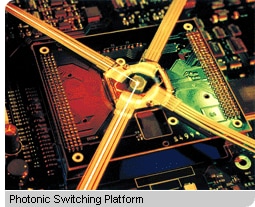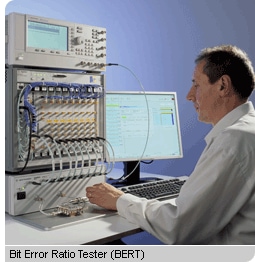Company History Timeline — 2000s
Following its successful IPO in 1999, Agilent became a fully independent company in June 2000 focusing on key markets in communications, electronics and life sciences. Recognized as an industry leader, Agilent was number one worldwide in the test and measurement market but also faced challenges in some of its businesses.
Agilent overcame those challenges and has evolved to focus on high growth areas in the life sciences, diagnostics and genomics, and lab support services, serving six key markets. The company is a global leader in analytical and clinical laboratory technologies, delivering insights and innovation that help our customers bring great science to life. Agilent’s full range of solutions includes instruments, software, services, and expertise that provide trusted answers to our customers' most challenging questions.

2000
- On June 2, 2000, Agilent Technologies becomes a fully independent company, following HP’s distribution of its Agilent shares to HP shareholders.
- The introduction of Agilent’s Photonic Switching Platform accelerates the development of all-optical networks.
- Net revenue: $10.8 billion; employees: 47,000.
2001
- Co-founder William R. Hewlett dies on January 12.
- Acquisition of Objective System Integrators Inc. (OSI) enables Agilent to provide a complete solution to service providers who offer 3G wireless, optical, broadband Internet Protocol and voice over packet networks and services.
- Philips acquires Agilent Technologies’ Healthcare Solutions Group.
- Net Revenue: $8.4 billion; Employees: 37,000.
2002
- Agilent's first listing on Fortune magazine's list of the top 500 U.S. companies: No. 212.
- President and CEO Ned Barnholt named Chairman of the Board.
- Agilent acquires RedSwitch, adding expertise in InfiniBand and RapidIO to Agilent's product portfolio.
- Agilent ships over 100 million optical mouse sensor components worldwide.
- Net revenue: $8.4 billion; employees: 37,000.
2003
- The company’s first whole human genome on a single microarray ships to gene expression customers for evaluation.
- Agilent introduces miniature camera modules for camera-enabled mobile phones.
- Agilent ships 200 millionth optical mouse sensor and 20 millionth FBAR duplexer.
- Net Revenue: $6.1 billion; Employees: 29,000.
2004
- Agilent's Visual Engineering Environment (VEE) Pro system-development software provides the interface to test communication equipment in the Mars Exploration Rovers.
- Agilent innovations enable DNA microarrays to more precisely and comprehensively identify and locate genetic alterations that contribute to cancer and developmental disorders, creating new applications in research and diagnostics.
- Agilent acquires Silicon Genetics, a leading provider of software solutions for life science discovery. The addition of Silicon Genetics' genomics data analysis and management tools positions Agilent to become a market leader in life science informatics.
- Net Revenue: $7.2 billion; Employees: 28,000.
2005
- William P. (Bill) Sullivan is named Agilent President and CEO succeeding Edward W. (Ned) Barnholt.
- Agilent forms joint venture, Chengdu Instruments Division, to develop and manufacture test equipment for China and the global market.
- Agilent establishes Agilent Technologies China Holding Company Ltd., based in Shanghai, to consolidate its entities in China.
- Kohlberg Kravis Roberts & Co. and Silver Lake Partners acquire Agilent’s Semiconductor Products Group.
- Net Revenue: $5.1 billion; Employees: 21,000.

2006
- Major advances in mass spectrometry instrumentation expand the breadth of applications and provide significant advances in performance for Agilent systems.
- Yokogawa Analytical Systems becomes a wholly owned subsidiary of Agilent Technologies, expanding the market presence for its products and services in Japan.
- Agilent introduces the E4898A Bit Error Ratio Tester (BERT) that is the industry’s first to operate at speeds of up to 100 Gb/s.
- Agilent introduces the MXA signal analysis platform, which is the industry’s fastest signal analyzer with the highest accuracy of any midrange analyzer.
- Agilent consolidates its locations in the San Francisco Bay Area into a 55-acre headquarters in Santa Clara. The location was originally built as a manufacturing site built by HP in 1968.
2007
- Agilent enhances its position in life science research and diagnostics with the acquisition of Stratagene, a public company with a worldwide presence. Agilent also acquires companies that expand its laboratory automation and informatics capabilities.
- Agilent introduces the 7890A Gas Chromatograph platform. Its unique design reliably manipulates the capillary flow inside a gas chromatograph oven, thus enabling new applications and productivity gains.
2008
- Agilent introduces the 6230 Accurate-Mass time-of-flight liquid chromatograph/mass spectrometer (LC/MS) system, which can detect and identify compounds in amounts smaller than two trillionths of a gram, making it a powerful tool for food safety, toxicology and other measurements where minute amounts of compounds must be identified.
2009
- Life Sciences and Chemical Analysis (LSCA) separate into the Chemical Analysis Group and Life Sciences Group. Agilent now is comprised of three business groups -- Life Sciences (LSG), Chemical Analysis (CAG) and Electronic Measurement (EMG).
- Agilent introduces the industry's first microwave signal generator that breaks the one-watt output power barrier, the PSG E8257D. The ultrahigh output of this instrument eliminates the need for supplementary hardware such as amplifiers, couplers and detectors.
- The Agilent 1290 Infinity Liquid Chromatography System enables faster performance with the industry's largest analytical power range to date. This is the industry's most powerful, sensitive and flexible liquid chromatography system.
- Agilent's Direct Drive Robot (DDR) wins an Association for Laboratory Automation best new product award. The Direct Drive Robot’s unique automation technology and software advances drug discovery research and genomics applications.